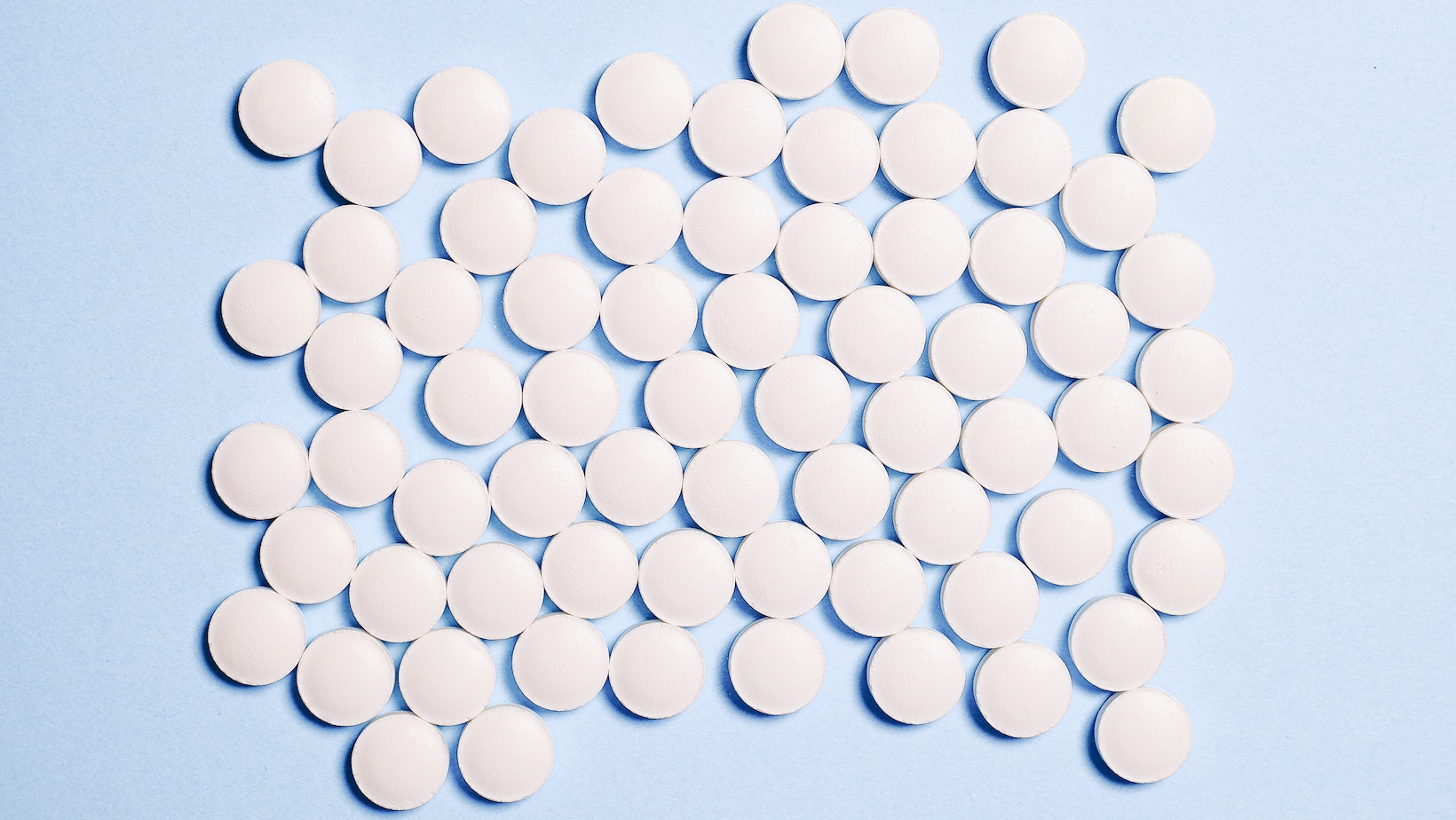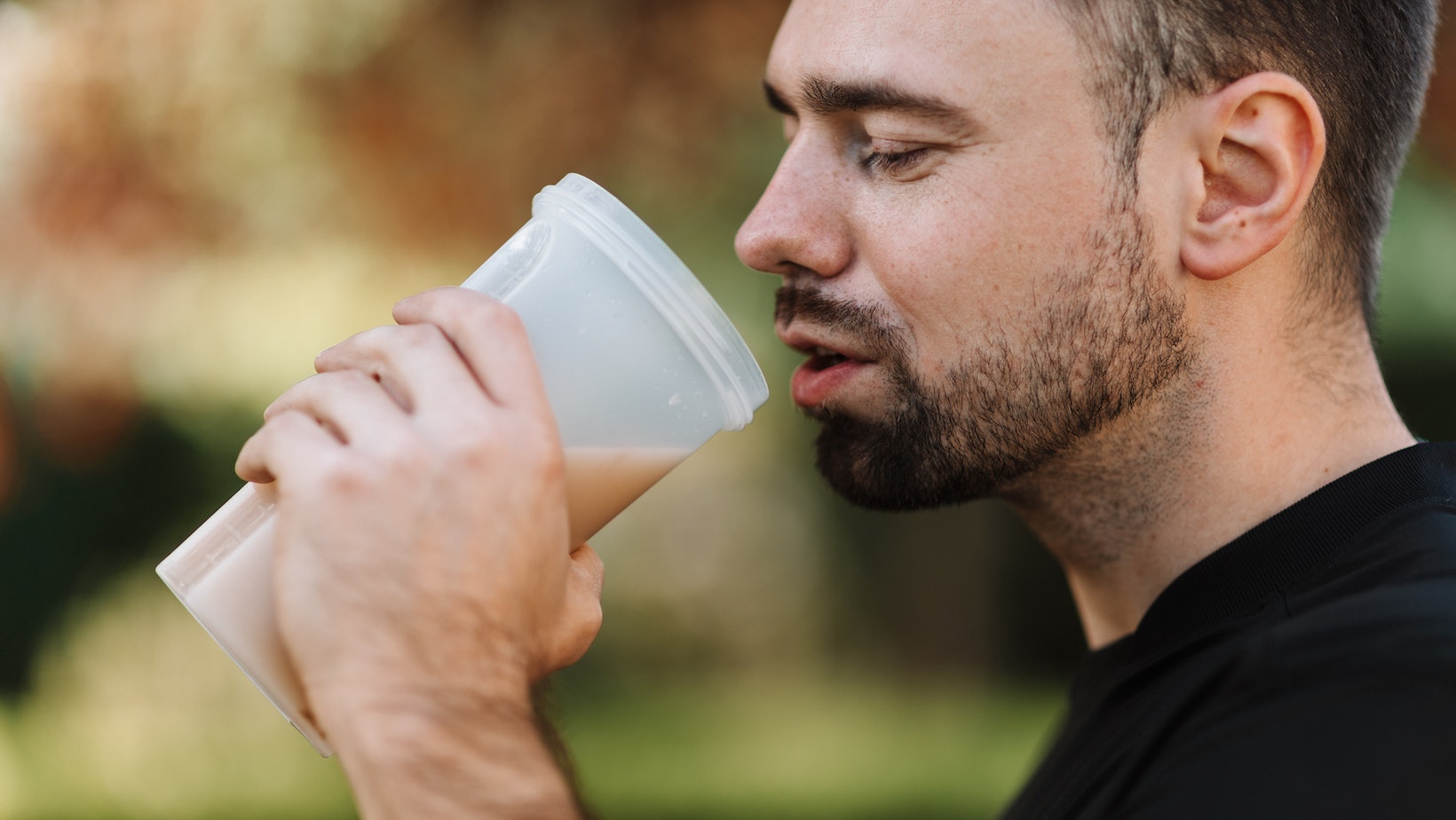
Creatine is a popular dietary supplement used by individuals looking to enhance their athletic performance. One common concern is whether or not creatine affects one’s physical appearance. Research suggests that creatine can increase muscle mass and aid in muscular strength, but it does not directly result in a change in outward appearance.
While creatine may enhance athletic performance, its effects on physical appearance are indirect. By increasing muscular strength and endurance, individuals utilizing creatine may be able to work out more efficiently and achieve better results. Additionally, creatine can cause water retention in muscles, leading to a temporary increase in size.
It’s essential to note that the effects of creatine on physical appearance also depend heavily on diet and exercise habits. A balanced diet and regular exercise routine will have a more significant impact on physical changes than relying solely on any supplemental product.
Creatine does more than just make your muscles look bigger – it’s like the personal trainer that never sleeps.
Does Creatine Make You Look Fat
The Mechanism of Creatine
Creatine works by increasing the production of energy in muscle cells during high-intensity activities, such as weightlifting and sprinting. It helps in synthesizing Adenosine Triphosphate (ATP) – the main source of energy for muscles. This increases endurance and improves overall athletic performance.
Creatine is a key component in ATP production, and taking supplements can increase creatine levels in muscles by up to 40%. The higher creatine concentration enhances the amount of work muscles can perform before fatigue sets in.
Furthermore, numerous studies have shown that creatine also contributes to muscle cell volumization. It draws water into your muscles, resulting in a more significant appearance and increased thickness. However, this extra water retention may cause some bloating or puffiness during early stages.
Throughout history, athletes have sought out methods to enhance their physical abilities. From ancient times through modern science-based approaches, experimentation continues with ever-more-sophisticated ways to achieve peak performance. Creatine supplements are one such innovation that has proven beneficial for many athletes today.
Is creatine a magic potion for gaining muscles or a curse that turns you into the Incredible Hulk? Let’s find out!

Can Creatine Alter Your Appearance?
Creatine’s impact on one’s appearance has been a topic of debate. However, research suggests that creatine supplements can lead to an increase in muscle mass and strength over time, which may alter one’s appearance positively. This effect is more visible in those who combine the use of creatine supplements with regular exercise and proper nutrition.
As creatine is responsible for storing energy in muscles, it draws water into the muscle cells leading to water retention or bloating. While this may make individuals look bulkier, it is a temporary effect that subsides once the supplement use is discontinued. Additionally, creatine does not contribute to fat gain or loss but aids in improving muscle hardness and definition.
It is essential to understand that results may vary from person to person depending on factors like dosage, training intensity, diet, and individual response to supplementation.
Pro Tip: To prevent bloating caused by creatine supplementation, drink plenty of water and follow the recommended dosage instructions.
Get ripped and impress your gym crush, all while enjoying the benefits of creatine use.
Benefits of Creatine Use
To achieve your fitness goals with creatine, exploring its Benefits of creatine use is crucial. With Increased Muscle Mass, Enhanced Strength, and Improved Endurance as solution briefly, creatine can help you perform better and reach your fitness goals faster.
Increased Muscle Mass
One of the remarkable benefits of using creatine is the gain in lean body mass. This organic acid is involved in energy production, which helps in muscle contraction during exercise. The increased availability of ATP (Adenosine Triphosphate) elevates strength and stamina leading to greater muscular hypertrophy.
- Studies have shown that creatine users experience enhanced muscle mass by 2-3 times.
- It leads to an increase in type II muscle fiber synthesis, providing bulky muscles.
- Creatine acts as a cell volumizer, allowing for more nutrients to accumulate in the cells leading to bigger muscles.
- Creatine usage proves effective in people who regularly perform resistance training or high-intensity interval training.
- The use of creatine can lead to better recovery between sets, thus allowing higher volumes of lifting and ultimately resulting in increased muscle mass.
In addition, creatine supplementation has been proven to boost muscle performance by decreasing fatigue attributable to intense workouts that usually restrict optimal muscular activity. This correlates with improvements in muscular endurance and overall strength. Thus, adding creatine becomes extremely beneficial for individuals with a strict fitness regime.
Pro Tip: It is recommended that individuals consume at least 5 grams per day for optimal results. However, consulting a healthcare professional before starting is advisable.
Why lift heavy weights when you can just lift heavy creatine tubs?
Enhanced Strength
The use of Creatine has been shown to lead to pronounced enhancements in muscular strength. This effect is achieved through the compound’s ability to increase energy production in muscle cells, thereby enabling muscles to contract more forcefully. The intake of this supplement results in a boost of ATP production, increasing the amount of energy available for intense workouts.
Creatine supplementation has demonstrated that it can enhance muscle strength over time, particularly with resistance training programs. Its benefits are not limited exclusively to elite athletes; even recreational athletes and individuals seeking general fitness can benefit from its use. Consistent use of creatine can enable users to push through harder workouts, leading to gains in strength and overall fitness levels.
In addition, research shows that creatine may also aid in recovery post-exercise by reducing muscle damage and inflammation markers. By speeding up recovery times and reducing soreness, one may be able to train more frequently or longer sessions. The effective combination of enhanced strength improvements and faster recovery periods contributes significantly towards better workout efficiency.
It is said that the history of utilizing creatine as a supplement dates back decades ago used primarily by Eastern Europeans in the 1960s for weightlifting competitions due to its impressive performance-boosting effects on high-intensity activities such as weightlifting records or sprint times. Today Creatine supplementation is a widely accepted practice used commonly among professional athletes who compete at top levels worldwide.
Want to feel like a superhero in the gym? Creatine’s got your back, or should we say, your legs, arms, and lungs.
Improved Endurance
Expanding on the idea of enhancing physical performance and capabilities, creatine use can bring about an increase in one’s potential to sustain prolonged exertion without tiring easily. The benefits of this outcome are unsurmountable when considering scenarios that require individuals to perform at their peak abilities persistently.
Improved Endurance Can be Achieved Through:
- More energy due to higher ATP production
- Enhancing muscle glycolysis
- Reducing muscle acidosis and fatigue
- Lowering oxygen consumption during exercise
- Increasing muscle buffer capacity
- Boosting maximal strength during high-intensity efforts
Moreover, using Creatine has several other advantages, including cognitive enhancements and injury prevention in certain scenarios.
It is interesting to note that creatine use dates back to ancient Greece, where athletes would consume meat before their athletic events for its naturally occurring creatine content. This natural version of Creatine was eventually extracted from animal tissues, leading it to be used as a dietary supplement by modern-day athletes striving for Better Performance over time.
Before you start chugging creatine like it’s your new best friend, make sure you’re ready for its side effects to crash the party.
Risks and Side Effects of Creatine Use
To understand the risks and side effects of creatine use, this section explores the potential harm caused by this supplement while focusing on your body’s reactions. Dehydration, gastrointestinal issues, liver, and kidney damage are the sub-sections that we’ll cover briefly to provide clarity and insight into the adverse effects of consuming creatine.
Dehydration
The risks and side effects of Creatine Use can lead to a decreased hydration level in the body. This can cause several potential health issues.
- Dehydration can lead to muscle cramps and strains.
- It may also cause headaches, dizziness, and lightheadedness.
- Severe dehydration can lead to heat stroke or even kidney damage.
- In some cases, it can also impact cognitive function and decrease overall athletic performance.
It is essential to maintain proper hydration levels as Creatine use can increase water needs. Ensure that you drink enough fluids, especially when physically active or exposed to high temperatures.
Individuals should not ignore the signs of dehydration as it may be life-threatening in some cases. Stay aware of your body’s signals and take prompt action when needed, such as seeking medical attention if symptoms become severe.
In Conclusion: Dehydration is a potential risk associated with Creatine use. Do not compromise on maintaining adequate hydration levels; otherwise, it may lead to serious health issues that could have been easily preventable. Stay hydrated to stay healthy!
Creatine might give you Hulk-like muscles, but it also comes with the not-so-superpower of gastrointestinal distress.

Gastrointestinal Issues
Creatine Use and Its Associated Gastrointestinal Disturbance
Creatine use has been associated with some side effects, one of which is gastrointestinal disturbance. This disturbance could include symptoms such as cramping, nausea, bloating, and diarrhea. These symptoms may be mild or more severe depending on the individual and the amount of creatine consumed.
The exact cause of this gastrointestinal disturbance is not fully understood. However, it can be minimized by taking creatine with food and increasing water intake to keep hydrated. Also, it may be helpful to start with smaller doses of creatine and gradually increase over time.
In addition, consuming the right type of creatine supplement can also help lower the risk of gastrointestinal issues. Micronized creatine is a form of supplement that has been found to reduce the side effects associated with traditional creatine supplements.
Overall, the benefits of using creatine for performance enhancement outweigh its potential risks if used correctly. However, it is important to consult a healthcare provider before beginning any supplementation routine and monitor for any signs of adverse effects.
Creatine might give you gains to impress your liver and kidneys, but they won’t be impressed when they’re damaged from overuse.
Liver and Kidney Damage
Research suggests that the use of Creatine supplements can lead to potential harm to some vital organs in the body. The liver and kidney functions can get negatively impacted by Creatine use due to the heavy dosage requirements beyond recommended levels.
Studies reveal that high levels of Creatine exert an enormous strain on these organs, leading to tissue damage and possible long-term complications in the future. This harm occurs typically when individuals take higher doses or abuse this substance for an extended period.
It is essential to note that such complications are rare, with several variables determining their occurrence. These factors include an individual’s health status, food intake, water consumption and overall lifestyle choices. Therefore, while using Creatine, it is vital always to maintain correct dosages within safe limits.
Moreover, supplement users must educate themselves about its effects fully and monitor symptoms through medical check-ups regularly. This way, any early signs of organ damage could be detected promptly, helping prevent significant complications that could arise.
Before getting jacked on creatine, consider the potential risks and side effects, like explosive diarrhea and spontaneous bodybuilding competitions.
Considerations for Creatine Use
To ensure optimal creatine use, it is crucial to consider a few key factors. Take the dosage and timing of consumption, quality of the product, and any personal health factors into account when incorporating creatine into your routine. Each of these sub-sections plays an essential role in maximizing the benefits of creatine while minimizing any potential negative effects.
Dosage and Timing
To ensure appropriate administration of creatine, it is imperative to consider the proper Dosage and Timing. Here are 5 points to take into account:
- Individuals should begin with a loading phase of 20-25g per day for one week before moving into the maintenance phase.
- Maintenance dosage should be around 3-5g daily taken after workouts or with meals.
- Creatine monohydrate, micronized creatine or other forms can affect dosage recommendations.
- Those who weigh more than the average person may require a higher dosage while smaller individuals may need less creatine supplementation.
- Timing is crucial as ingesting creatine within 30 minutes before or after a workout session may result in its effective absorption by the body.
Additionally, it’s important to drink enough water along with your creatine intake as dehydration can lead to muscle pain and cramping.
In summary, being aware of appropriate Dosage and Timing for Creatine use can maximize outcomes and prevent negative side effects. It is advisable to consult a medical expert before using this supplement.
Interestingly, studies reveal that Creatine Monohydrate was first discovered in meat extracts by Michel Eugene Chevreul in 1832 but wasn’t observed until discovered again in skeletal muscles by Harvard University professors. Remember, not all creatine is created equal – make sure you’re not just spooning powdered disappointment into your shaker bottle.

Quality of Product
When using creatine, it is crucial to consider the authenticity of the product. The quality of creatine can affect its effectiveness in improving athletic performance. A reliable and authentic product will have appropriate labeling, documentation, and safety standards. Creatine supplements with ‘Creapure’ label are tested for purity; therefore, have substantial evidence for their effectiveness and safety.
It is essential to consider a trustworthy source when buying Creatine products as adulteration may pose health risks. Further, creatine bulk powder should have certification from third-party laboratories such as NSF International or Informed Sports to ensure quality control.
Buying from reputable suppliers decreases the risk of receiving counterfeit products as well and ensures proper dosage interval recommendations are available. Overall purchasing from trusted vendors reduces exposure to harmful substances like heavy metals and impurities that may lead to adverse reactions.
In the past decade federal law enforcement officials have investigated multiple cases of false labeling (or adulterated goods) regarding dietary supplements containing stimulants that were concealed from consumers. It’s essential to prioritize reading ingredient labels when making purchasing decisions because some manufacturers hide substances within proprietary blends.
Investing in high-quality creatine supplements bought from trustworthy sources is imperative in achieving optimal health benefits and athletic performance improvements. Personal health factors can affect creatine use, so before popping pills, make sure you’re not already a ticking time bomb.
Personal Health Factors
Understanding your individual health status is crucial before considering the use of creatine. Factors like pre-existing medical conditions, medications, and family history can have a significant impact on its effectiveness and potential side effects. It’s essential to consult with a healthcare provider to discuss any potential risks or implications.
Additionally, certain lifestyle factors can affect creatine usage, such as diet, exercise routine, and hydration levels. Adequate water intake is crucial to prevent dehydration and ensure optimal absorption of creatine into muscle cells.
It’s worth mentioning that although creatine is considered safe for most individuals when taken at recommended dosages, some may experience adverse reactions like digestive issues or renal dysfunction.
Finally, case reports suggest that certain populations like children, adolescents, pregnant women and those with kidney disease should avoid or limit creatine use due to possible negative outcomes.
In a documented history traceable to the 1800s among France fishing communities consume raw meat extracts to improve their physicality. In the late 1990s Russian athletes began using Creatine supplements followed by many international athletes who reported improvements in athletic abilities after supplementing Creatine in their regular diets.
Before you go pumpin’ iron and chuggin’ creatine like a frat boy, consider these tips or else your gains may just be creatine-void.
Conclusion
Creatine’s effect on physical appearance varies from person to person. While it can increase muscle mass and strength, it may also cause water retention that can temporarily alter one’s look. Therefore, the impact of creatine on how you look cannot be generalized.
Moreover, creatine supplementation involves several factors such as dosage, training status, diet and hydration levels of an individual. These variables can significantly influence the way creatine affects one’s appearance.
It is also essential to note that any visible changes caused by creatine intake are temporary and reversible. Once your creatine intake is stopped or reduced, the effects will eventually subside over time.
In history, creatine was initially used in sports science for its performance-enhancing properties before its cosmetic benefits were noticed. Today, however, it more commonly used for its potential muscle-building effects rather than its aesthetic value.
Overall, while creatine may cause temporary changes in your body’s appearance due to increased water retention and muscle mass growth, these changes aren’t universal – they vary from individual to individual and depend on various factors such as dosage and lifestyle choices.

